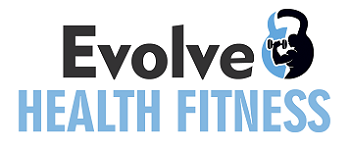Background of Camp Lejeune Water Contamination
Historical Overview
Camp Lejeune, a United States Marine Corps base in North Carolina, has a long history dating back to its establishment in 1941. Over the decades, it has served as a crucial training ground for Marines. However, between the 1950s and 1980s, the base’s water supply became contaminated with hazardous chemicals, including volatile organic compounds (VOCs) such as trichloroethylene (TCE) and perchloroethylene (PCE).
Discovery of Contamination
The contamination was first discovered in the early 1980s when routine water testing revealed the presence of harmful chemicals. Subsequent investigations traced the source of contamination to leaking underground storage tanks, industrial spills, and waste disposal practices. The extent of the contamination was alarming, affecting multiple water wells that supplied drinking water to the base.
Initial Response
Upon discovering the contamination, the initial response from the military and government agencies was slow and inadequate. It took several years before significant actions were taken to address the issue. The contaminated wells were eventually shut down, and efforts were made to provide safe drinking water to the residents. However, the delayed response led to prolonged exposure for many individuals, raising concerns about the long-term health impacts.
Health Impacts of the Contaminated Water
Affected Diseases and Conditions
The water contamination at Camp Lejeune has been linked to a variety of serious health conditions. These include:
- Various types of cancer, such as leukemia, bladder cancer, and kidney cancer
- Neurological disorders, including Parkinson’s disease
- Reproductive issues, such as infertility and miscarriages
- Birth defects and developmental disorders
Population at Risk
The population at risk includes military personnel, their families, and civilian workers who were stationed at Camp Lejeune between the 1950s and the 1980s. This group is estimated to be in the hundreds of thousands. The risk extends to:
- Veterans who served at the base
- Family members who lived on the base
- Civilian employees who worked at the base
Scientific Studies and Findings
Numerous scientific studies have been conducted to understand the full extent of the health impacts caused by the contaminated water at Camp Lejeune. Key findings include:
- The presence of volatile organic compounds (VOCs) like trichloroethylene (TCE) and perchloroethylene (PCE) in the water supply
- A higher incidence of certain cancers and chronic diseases among those exposed
- Long-term health monitoring and epidemiological studies that continue to reveal new information about the risks associated with the contamination
Legal Framework for the Lawsuit
Relevant Laws and Regulations
The Camp Lejeune water contamination lawsuit is governed by a complex web of [laws and regulations]. Key among these is the Camp Lejeune Justice Act of 2022, which allows affected individuals to file claims for damages. Additionally, the Comprehensive Environmental Response, Compensation, and Liability Act (CERCLA) and the Safe Drinking Water Act (SDWA) play crucial roles in setting the legal standards for environmental safety and liability.
Role of the Government
The [government] has a significant role in both the contamination and the subsequent legal proceedings. Various federal agencies, including the Environmental Protection Agency (EPA) and the Department of Defense (DoD), are involved in the investigation, regulation, and remediation efforts. The government is also a defendant in many of the lawsuits, making its accountability a central issue.
Legal Precedents
Several legal precedents have shaped the current landscape of the Camp Lejeune water contamination lawsuit. Notable cases include Wilson v. United States, which established the government’s liability for environmental contamination, and Smith v. United States, which clarified the statute of limitations for filing claims. These precedents provide a legal foundation for current and future lawsuits, offering a roadmap for affected individuals seeking justice.
Filing a Claim
Eligibility Criteria
To file a claim related to the Camp Lejeune water contamination, individuals must meet specific eligibility criteria. These typically include:
- Proof of residence or employment at Camp Lejeune for at least 30 days between August 1953 and December 1987.
- Diagnosis of a disease or condition linked to the contaminated water.
- Documentation supporting the claim, such as medical records and employment history.
Required Documentation
Filing a claim necessitates gathering various documents to substantiate the case. Essential documents include:
- Medical records showing diagnosis and treatment of the condition.
- Proof of residence or employment at Camp Lejeune during the specified period.
- Military service records (if applicable).
- Expert testimony or scientific studies linking the condition to the contaminated water.
Process and Timeline
The process of filing a claim involves several steps and can take a considerable amount of time. Here is a general outline:
- Initial Consultation: Speak with a legal expert to evaluate the case.
- Document Collection: Gather all necessary documentation.
- Filing the Claim: Submit the claim to the appropriate government agency or court.
- Review and Investigation: The claim will be reviewed, and an investigation may be conducted.
- Decision and Compensation: A decision will be made, and if successful, compensation will be awarded.
The timeline for this process can vary, but it often takes several months to years to reach a resolution.
Challenges and Controversies
Disputes Over Evidence
One of the primary challenges in the Camp Lejeune water contamination lawsuit is the disputes over evidence. Plaintiffs often face difficulties in proving the direct link between their health conditions and the contaminated water. This is compounded by the passage of time, which has led to the degradation or loss of crucial evidence. Additionally, there are disagreements among scientific experts regarding the extent of contamination and its health impacts.
Government Accountability
Government accountability is another significant controversy. Many affected individuals and advocacy groups argue that the government failed to act promptly and transparently when the contamination was first discovered. There are also claims that the government has not provided adequate support or compensation to those affected. This has led to a lack of trust and increased scrutiny of government actions and policies related to the contamination.
Public Perception
Public perception plays a crucial role in the Camp Lejeune water contamination lawsuit. The media coverage and public opinion can influence the legal proceedings and the overall response to the crisis. There are varying opinions on the severity of the contamination and the responsibility of the involved parties. Some believe that the issue has been exaggerated, while others feel that it has not received the attention it deserves. This divergence in public perception can impact the momentum and outcomes of the lawsuit.
Support and Resources for Affected Individuals
Medical Assistance Programs
Individuals affected by the Camp Lejeune water contamination have access to various medical assistance programs. These programs are designed to provide comprehensive healthcare services, including diagnostic tests, treatments, and ongoing medical care. Some of the key programs include:
- Veterans Affairs (VA) Healthcare: Eligible veterans can receive medical care through the VA healthcare system, which covers a wide range of services related to the conditions caused by the contamination.
- Civilian Health and Medical Program of the Department of Veterans Affairs (CHAMPVA): This program offers health insurance to the families of veterans who are not eligible for TRICARE.
- Specialized Clinics: Certain clinics specialize in treating conditions associated with the contamination, providing targeted care and support.
Legal Aid Services
Legal aid services are crucial for individuals seeking to file claims related to the Camp Lejeune water contamination. These services help affected individuals navigate the complex legal landscape, ensuring they meet all eligibility criteria and submit the required documentation. Key legal aid resources include:
- Pro Bono Legal Services: Many law firms offer free legal services to affected individuals, helping them file claims and represent them in court if necessary.
- Veterans Service Organizations (VSOs): VSOs provide legal assistance and advocacy for veterans, helping them understand their rights and the legal processes involved.
- Legal Clinics: Some universities and non-profit organizations run legal clinics that offer free or low-cost legal advice and representation.
Community Support Groups
Community support groups play a vital role in providing emotional and practical support to those affected by the Camp Lejeune water contamination. These groups offer a platform for individuals to share their experiences, seek advice, and find comfort in knowing they are not alone. Key aspects of community support include:
- Support Meetings: Regular meetings where affected individuals can come together to discuss their challenges and successes.
- Online Forums: Digital platforms where individuals can connect, share information, and offer support to one another.
- Resource Sharing: Groups often share valuable resources, such as contact information for medical professionals, legal advisors, and other support services.




